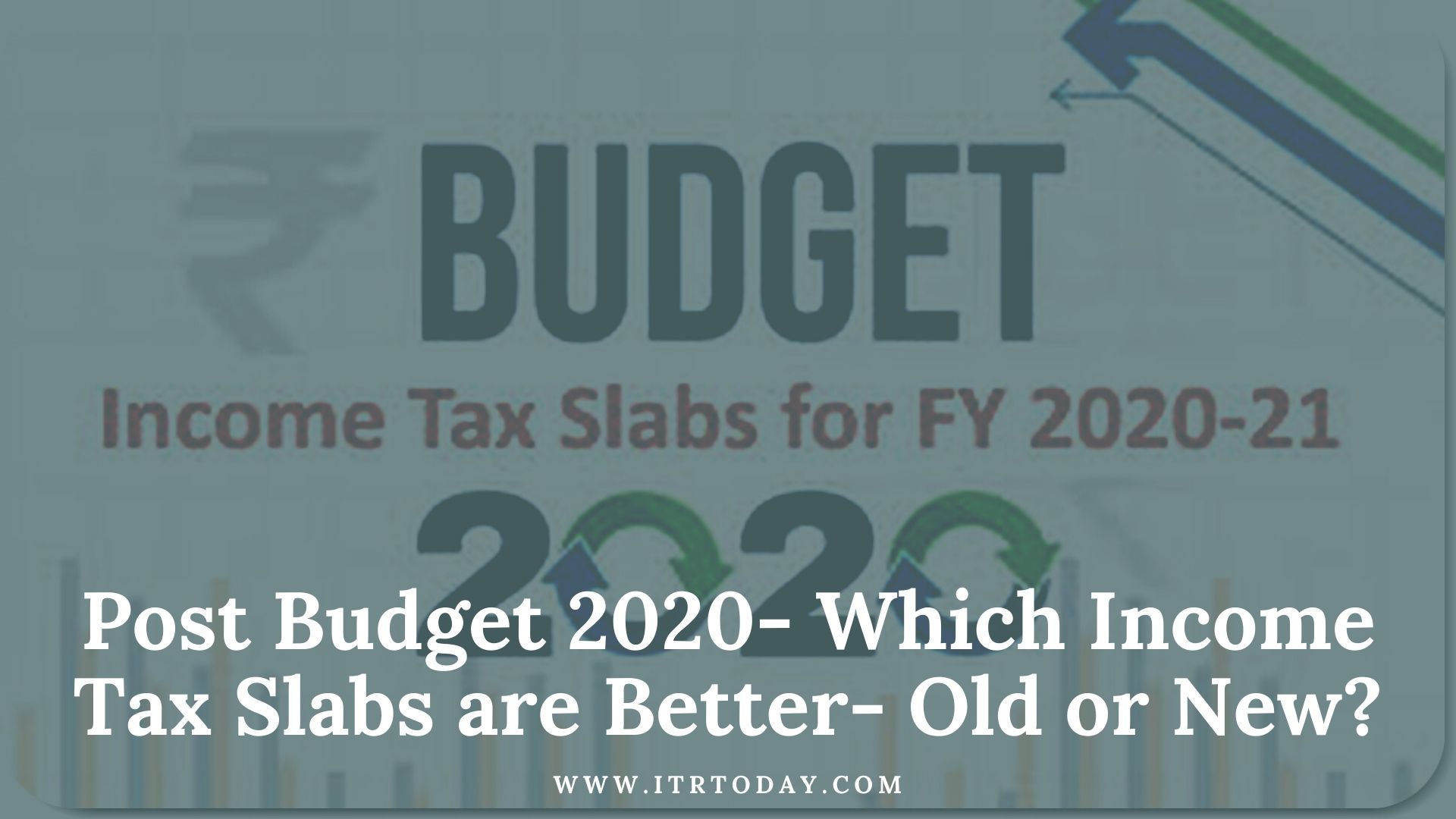The budget 2020 has introduced new tax slabs with an option to choose the old tax slabs. It’s important to know which income tax slabs would be suitable for you, an old income tax slab with exemptions or a new income tax slab without exemptions for FY 2020-21.
The assessee can opt between the new tax slab rates and the earlier tax slab rates based on what suits best to him from a tax planning perspective.
How Budget 2020 has Changed IT Slabs?

Union Budget 2020 provides individuals with the option of paying tax under the new system of lower income tax rates by ignoring tax exemptions/deductions or continuing to pay tax under current income tax law by claiming the exemptions and deductions that apply.
Primarily, the more an individual claims exemptions, the less likely he/she is to benefit from the new optional tax scheme will vary on a case-by-case basis.
Calculations show that salaried people who demand a large number of deductions like 80C, 80D, housing loan interest, HRA and LTA are likely to be off the current income tax regime.
The higher an individual claimed deductions, the less likely he/she will be to gain under the new income tax scheme.
Which is Better the Old Income Tax Slab Rates or the New Income Tax Slab Rates?
Salaried Persons not Claiming any Deductions or Exemptions
- If no tax deductions or exemptions claimed under the new tax system, an individual with Rs 7.5 lakh gross salary would save Rs 15,600 tax. If he/she opts for the new income tax slab rates, the person will save Rs 28,600 in tax if he/she earns a salary of Rs 10 lakh and would save Rs 49,400 if the pay is Rs 12.5 lakh. A person who earns Rs 15 lakh or higher will save Rs 62,400 in tax.
- If the salaried person claims deductions under section 80C, 80D (medical premium), HRA exemption, LTA exemption and deduction of interest paid on self-occupied property loans up to permissible limits, he is likely to be better off under the present income tax scheme.
- If the salaried person claims deductions under section 80C, 80D (medical premium), HRA, LTA and deduction of interest paid on self-occupied property loans up to permissible limits, then he is likely to be better off under the new slab rate.
Salaried Persons Claiming Common Deductions and Exemptions under Sec 80C,80D, and Other Standard Deductions.
Suppose a person claims tax benefits as shown in the following example-
If the standard deduction is Rs 50,000, deductions of Rs 1.5 lakh under section 80C, and Rs 25,000 for a medical premium under section 80D and he opts for the new tax scheme, the individual will have to pay Rs 20,800 extra tax at the gross salary of Rs 7.5 lakh and Rs 7,800 at the gross salary of Rs 10 lakh, and Rs 5,200 at the gross salary of Rs 12.5 lakh.
Furthermore, Rs 7800 tax will be saved at or above the gross salary amount of Rs 15 lakh.
Thus, a higher earner claiming only such deductions is likely to save tax under the new regime. However, lower earners up to Rs 12.5 lakh’s gross salary would end up paying more tax.
Salaried Persons Claiming Extra Deductions and Exemptions under Sec 80C,80D, Exemption from House Rent Allowance and Standard Deductions.
- If the person claims tax benefits on the following assumptions; if the standard deduction is Rs 50,000, deduction of Rs 1.5 lakh under section 80C, Rs 25,000 under section 80D for medical premium and exemption from HRA (varies as per the salary), and he chooses the new tax scheme, then the person will have to pay Rs 39,000 extra tax at the gross salary of Rs 7.5 lakh (claiming HRA exemption of INR 150,000).
- If the gross salary is Rs 10 lakh (claiming HRA exemption of INR 200,000) the additional tax payable shall be Rs 49,400.
- If the gross salary is Rs 12,5 lakh (claiming HRA exemption of INR 250,000) the additional tax payable shall be Rs 59,800.
- If the gross salary is Rs 15 lakh (claiming HRA exemption of INR 300,000) the additional tax payable shall be Rs 83,200.
- If the gross salary is Rs, 20 lakh (claims of HRA exemption of INR 400,000), the extra tax payable will be Rs.117000.
Then, Which One is Better?
Well, each person will have to make his estimates to see if the new system is beneficial for him. It will depend on the level of the deductions and exemptions that you are claiming. However, individuals who fall in a lower salary bracket will be more beneficial in the new IT slab scheme than those who fall in the higher earning bracket.